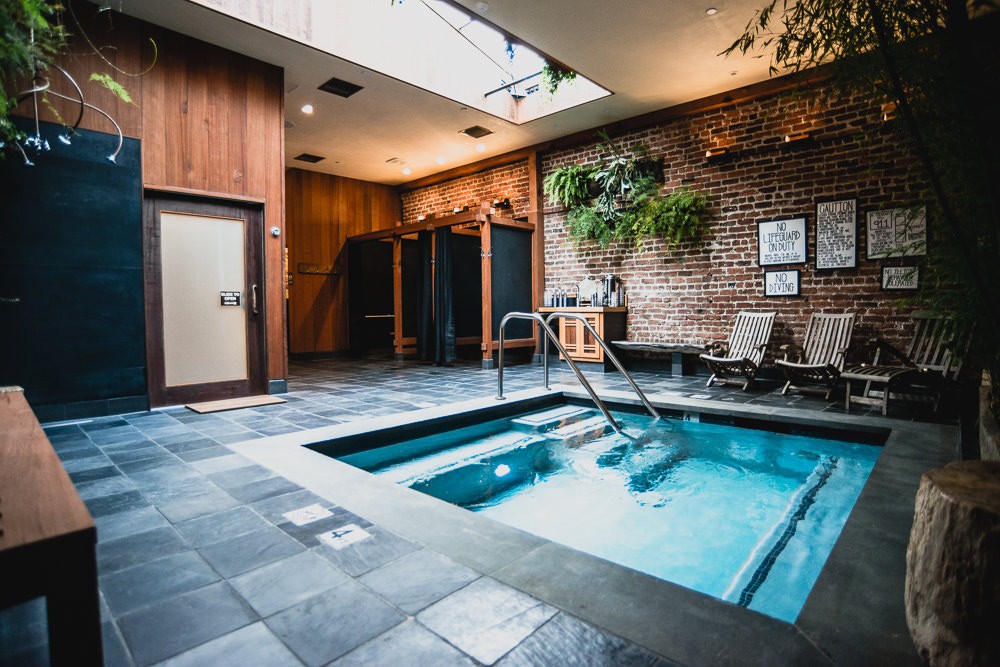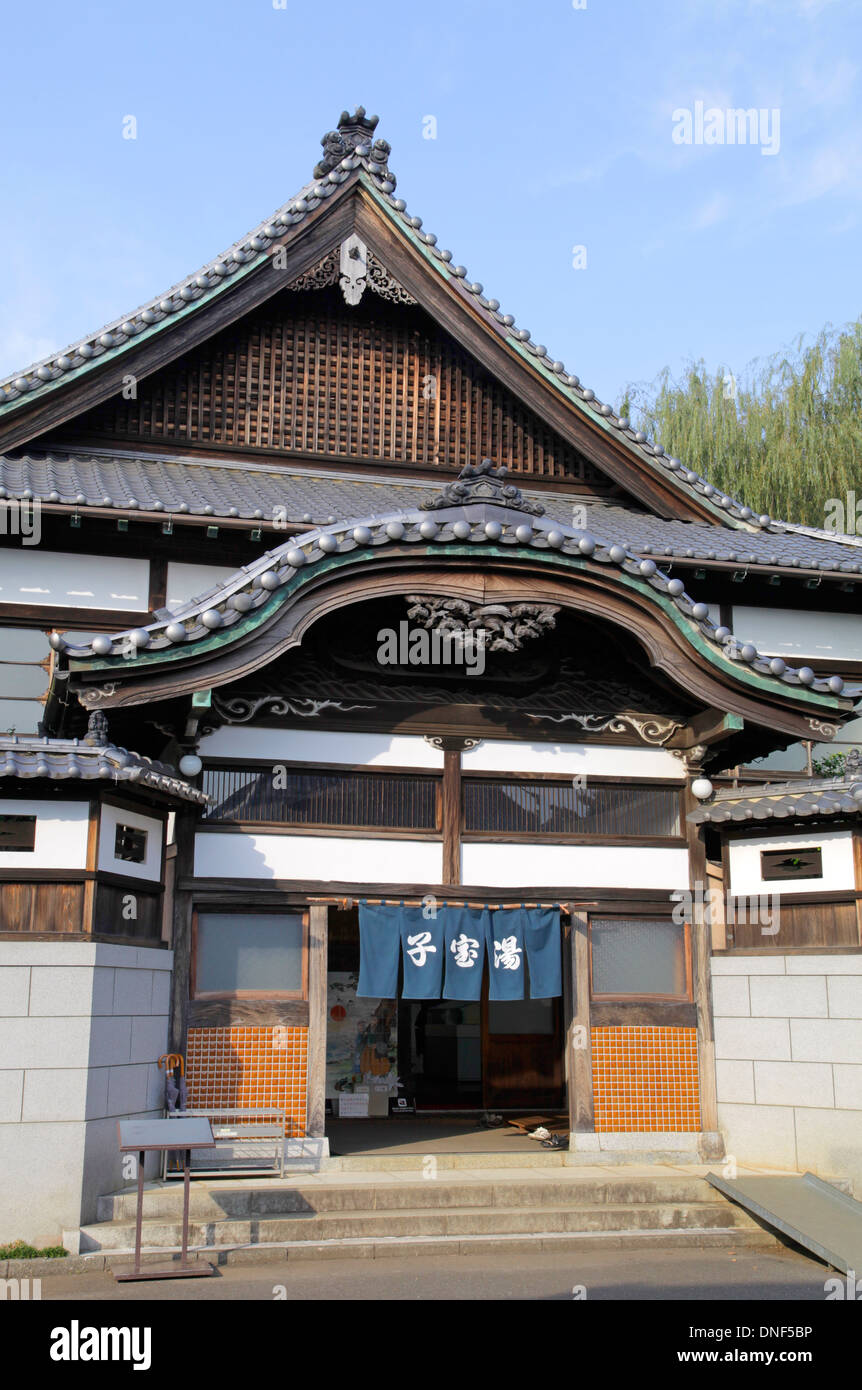Table Of Content

From our experience, Japanese tend not to shave their pubic hair. Traditionally, women don't use public baths while menstruating. Two baths I visited had explicit signs prohibiting bathing while menstruating. Japanese baths are generally set up so that bathers don't need to bring anything. The basics — shampoo, soap and towels — are usually provided.
Tokyo Odaiba Oedo-Onsen-Monogatari - party time! 大江戸温泉物語
Once you have had enough heat, send a shock to your senses by dipping in the frigid water. After the cold water jars, you awake head back to the bath, and bask in comfort as the warm water engulfs you. Sento (銭湯) — A public bath; different from onsen in the sense that sento are composed of heated tap water instead of with special minerals. Often used by locals as well, and more common in major cities than onsen. Customers pay entrance fees or buy soap and other items at these platforms, located in the changing rooms of older sentō.
thoughts on “Experiencing an Onsen the Rules of a Japanese Bath Houses”
This involves staying at a hotel with hot spring facilities, eating delicious food, and having fun in the surrounding sightseeing areas. There are many hot spring districts in Japan, but some of the most popular are Hakone, Arima Onsen, and Beppu. While showers are a necessary part of everyday life, the Japanese don’t just take showers, they love soaking in bathtubs. Most people in Japan think of the bathtub as washing away not only their sweat and dirt from the day but their fatigue, too. If you go early and do the 2hour hike from Kibune town to Kurama, you can make this onsen the dessert after your hike. The hike is beautiful and dotted with wonderful temples.
STORY 7 tattoo-friendly onsen in Japan - Japan
STORY 7 tattoo-friendly onsen in Japan.
Posted: Fri, 20 Jan 2023 11:31:08 GMT [source]
Experiencing an Onsen the Rules of a Japanese Bath Houses

Most public bath houses in Japan will have a sign outside indicating whether you are supposed to wash your body before entering the baths (内湯) or not. If the sign has an image of a person washing their body, then it means you are supposed to wash first. If there is no image, then you can just go straight into the baths.
Here we’d like to mention some manners and rules that you should keep in mind when visiting onsens and sento, so as to avoid any misunderstandings or anything unpleasant. Japan is home to many volcanoes, which is why there are more than 20,000 onsen facilities located across the country. While there are onsens in Tokyo, if you head to more rural areas, you will discover many more onsens, as well as onsen towns where traditional Japanese inns are gathered in abundance. In Japan, one popular post-bath custom is to drink milk, with many onsen and sento selling it. Take this opportunity to try a refreshing bottle of fruit gyuunyuu (“fruit milk”) or coffeegyuunyuu (“coffee milk”). Do not put anything other than yourself in the water; place your hand towel on your head or to the side.
Relax & Enjoy
Baths at lodgings range drastically in terms of quality and size, and can be found at budget-friendly capsule hotels to posh ryokans. There was no additional cost to use the bath while staying at First Cabin and APA Villa. Baths at ryokans — traditional Japanese inns — can range from a simple public bath to extravagant private baths with a view. Traditionally, onsens were outdoors and use naturally hot water from geothermally heated springs. Indoor onsens are also more common these days in Japan.
Eva Longoria and husband José Bastón temporarily moving to Spain
Kairyo-Yu is an extremely modern sento that matches the style of nearby Shibuya station. Upon entering this sento you feel as though you’ve stepped into another world. The artwork on the walls depicts scenes from Shibuya and is relaxing to look at as you enjoy your bath. Your first sento or onsen experience may be a little intimidating, but you’ll start to relax and feel right at home after a few minutes. They are meant to be relaxing for visitors, and after your nerves calm down about being naked in front of others, you’ll soon fall right into the swing of things. Don’t worry if you don’t do something perfectly the first time, but in saying that, most sento customs are pretty much common sense.
Tokyo Sentō
In 1912, the owner of Kikaiyu in Kanda asked the Western-style painter Kawagoe Kōshirō to produce a mural to please the children of his customers. Kawagoe was from near Mount Fuji in Shizuoka Prefecture, so he painted the famous peak. Fuji murals caught on quickly in Tokyo as bathers soaking under the paintings are made to feel like they are in the waters around the mountain, purifying their bodies as in some ancient ritual. This illusion is heightened by the placement of Tokyo bathtubs right against the wall. In other areas, many sentō do not have paintings, and tubs tend to be in the center of the room.
While Japanese head spas have been trending lately, the practice can be traced back to ancient Ayurvedic traditions that considered scalp health an integral part of overall well-being. As the name implies, a head spa treatment involves the head being washed, conditioned and massaged, followed by a hair mask. Most head spa treatments start with a consultation in which the client communicates the unique conditions of their hair and scalp so the treatment can be customized to their needs. Beyond the cosmetic benefits of making skin glow, a lymphatic drainage massage can help treat health conditions like rheumatoid arthritis, chronic venous insufficiency, fibromyalgia and lipedema. Either way, the use of gentle, repetitive strokes is sure to leave you feeling relaxed. It would be best to avoid soaking in hot baths if you are pregnant (as they raise your body temperature), have low blood pressure, heart issues, skin injuries or urinary tract infections.
"The setting, the architecture, it's all there to convey a sense of feeling," Polyakov says. "The idea of peace and emptiness and quiet beauty were very important in 16th-century Japan. These traditions have carried on for hundreds of years, including today." Show someone how much you care by treating them to a gift of wellness and relaxation.
Though public bathing originated in the sixth century, bathhouses became popular during the Edo period (1603–1868). At the time, homes did not have private baths, so each neighborhood had a public bath. Since then, this communal space has remained a cornerstone of bathing culture in Japan. Another type of Japanese public bath is onsen, which uses hot water from a natural hot spring. In general, the word onsen means that the bathing facility has at least one bath filled with natural hot spring water.
No.1 rule of a cruise ship onsen - Escape
No.1 rule of a cruise ship onsen.
Posted: Thu, 26 Oct 2023 07:00:00 GMT [source]
Wash yourself thoroughly before entering a hot pool - wash all over (with soap and shampoo) at a wall-side shower. Hot pools are communal, and you must be seen to be spotlessly clean when you enter one. Tokyo's first bath house was a steam bath said to have been opened in the 1590's, with today's tub-type bath house not appearing until the Edo period. The manorial system disintegrated in the ensuing Muromachi era, and temples were no longer in control of large swathes of territory.
Sento is a cultural heritage with a strong historical background and is known to hold great benefits for health and beauty. Some baths have designated times for different genders; be sure you are bathing during the correct time slot. Very few onsen today are konyoku (混浴), or mixed baths for both sexes (expect for kashikiri-buro). None of these various shared features are essential to the bathing experience.
The onsen water is thought to have healing properties, so many people visit onsen to help with various ailments. A Japanese Sento, on the other hand, uses artificially heated water. Public baths are called sento in Japan and have a history dating back hundreds of years.
The project is yet another by Kentaro Imai, who took the concept of “Shibuya Crossing” as his inspiration, aiming to create a public bathhouse that aids community building and cultural exchange. There are hot and cold tubs, a carbonated bath and a popular sauna which often requires visitors to queue. There’s also a rental space for exhibitions and workshops, and a small shop selling trendy branded clothing and merchandise so you can wear a piece of the bathhouse home. Tokyo welcomed its first sento in 1591, and these multiplied across the country and the centuries, numbering more than 18,000 nationwide by 1968. Sento, which use heated tap water, are not to be confused with onsen, public outdoor baths filled with naturally heated volcanic spring water. Wash your body thoroughly with soap, using the hand towel.
The volcanic nature of Japan provides plenty of springs but obviously, the baths at the Bath House Blue Mountains are not heated by natural springs. This is probably the most common question when it comes to visiting a bathhouse. If you have a tattoo most likely they will deny you entry to the bath. Visiting an onsen with tattoos will be less likely if it is a neighborhood baths, compared to a hotel onsen. If you want to experience a traditional Japanese bath and enjoy the benefits of hot spring water, then an onsen is the way to go. If you’re looking for a more budget-friendly option, or you’re simply in a city and can’t make it out to the countryside, then a sento is a great choice.

No comments:
Post a Comment